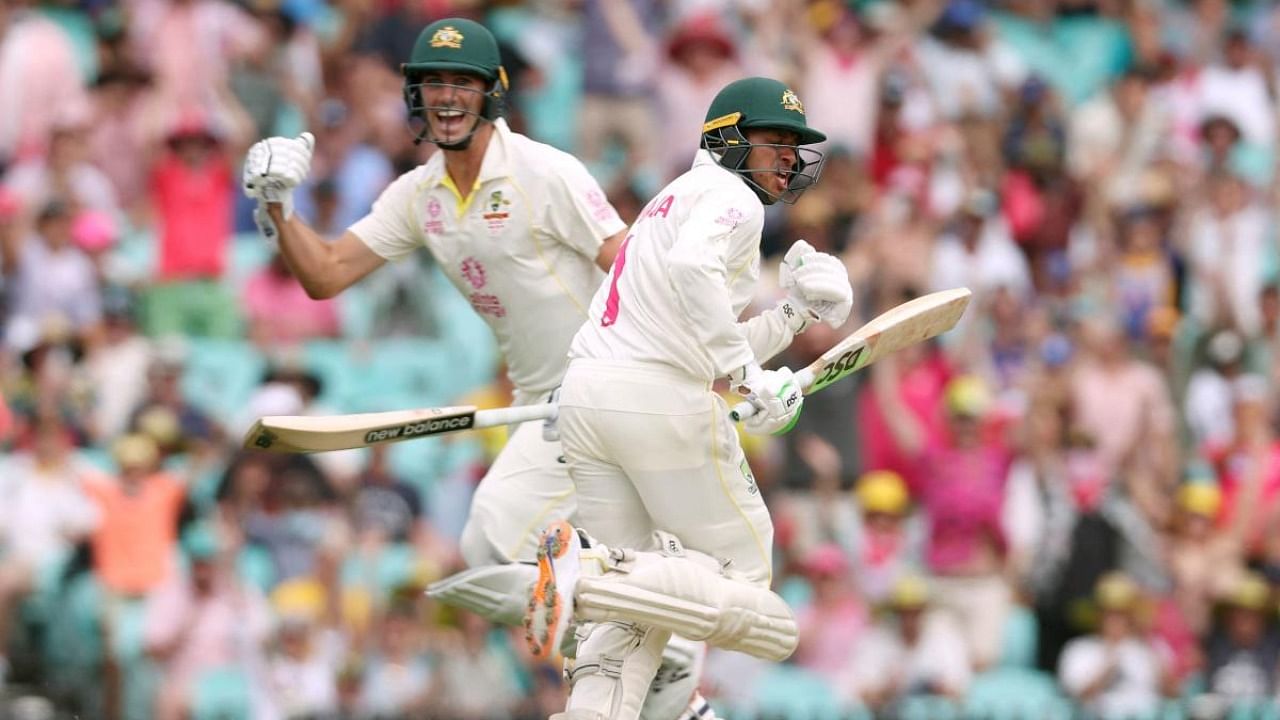
It was a striking moment when Ashes-winning Australian captain Pat Cummins suspended his team's public champagne spraying celebrations to ensure Muslim Usman Khawaja was included.
Cummins has been spectacular as both player and new age leader, but that particular moment could well mark the beginning of a new inclusiveness in Australian cricket with special relevance for players of South Asian descent who are increasing in local and state numbers.
For example, there are two playing right now for Australia in the Under-19 World Cup in West Indies.
Harkirat Bajwa was born in Mohali but shifted at age seven to Melbourne, where his father, construction engineer Baljit Singh, joined his brothers and became a taxi driver. Harkirat had played street cricket in Mohali but took to the game seriously in Melbourne, where, he said, he loved the community. His father, though, suggests Harkirat took some time to settle in.
Many migrant kids have had that experience in Australia, where the reputation for being multicultural often outstrips the reality, with downright racism having become a persistent social strand in recent years.
But Harkirat played his way through local, state and now national playing ranks, his off-spin skills and action mirroring those of Harbhajan Singh, even if his idol is Ravichandran Ashwin.
Nivethan Radhakrishnan is the other player, a hugely talented spinner who bowls ambidextrously and is an accomplished batter (as it is now termed). He was born in Chennai, the son of Anbu Selvan, who himself was part of the city's intense cricket culture. A good player, at young age Anbu Selvan also became a club manager in the league. Known as being fiery and committed, he later worked in America as an engineer.
Anbu Selvan's two boys became good cricketers, with Nivethan showing special promise by the age of nine when a change in the Tamil Nadu Cricket Association (TNCA) rules meant he had to wait until thirteen before playing in the league. Frustrated, Anbu Selvan checked out international conditions and shifted the family to Sydney.
Nivethan developed quickly, had stints back in the TNCA leagues at a young age, became an IPL net bowler, flourished back in Sydney, then got a contract to play for Tasmania.
Like Harkirat, Nivethan says he enjoys the cricket culture in Australia, and in cricket is "an Aussie" even if of Indian origin.
That is why the Cummins moment is so significant.
These are not the first Australian Under-19s of South Asian origin, but perhaps among the first to feel genuinely included.
Usman Khawaja himself went public to underline that inclusiveness following Cummins's actions, and that, too, was significant because the Pakistani-born player has made no secret he often felt isolated during his years in Australian cricket.
And there is a history of that. A few years ago, Kumar Sarna, a Delhi-born outstanding player Australia Under-19 representative, was rated as a future Australian player but never broke into the Victorian state side. He left Australia and returned to India, suggesting the game's Australian culture as an issue. After a fruitless legal challenge to the ruling that as an NRI (non-resident Indian), he was ineligible for Indian selection, he returned to Melbourne grade cricket, but the promise went unfulfilled.
The Cummins gesture has an international dimension, too, especially in the wake of England's disastrous Ashes showing.
There have long been suggestions that players of Asian and African-Caribbean descent have been seriously under-represented in English cricket – Haseeb Hameed was the only such representative in Australia this series, and the recently retired Moeen Ali was really the only prominent and long term player from such a background recently.
Several reasons have been advanced for that, but recent and ongoing ructions at Yorkshire County Cricket Club in the wake of the Azeem Rafiq allegations have searchlight-ed the role of racism as a major inhibitor. Among other things, he reported having had red wine forcibly poured down his throat and having been told to "change by the toilets" during his career as an allrounder. That career has been destroyed by racism, he suggests, and the public inquiries that have ensued go a long way to confirming that claim.
So for Cummins to have supported Usman Khawaja so publicly should and must be a great step forward for players of under-represented backgrounds everywhere, and especially so for those of south Asian origin as the Indian diaspora spreads.
That diaspora has increased in Australia as we know, but a glance at other team lists in the Under-19 World Cup shows that happening elsewhere as well. England still has only two, underlining the Yorkshire problem. The UAE and Canada teams are dominated by players of South Asian descent, while Scotland has three, Ireland one, and Uganda one.
Given population percentages, then, Australia might well be on the way to achieving a representational balance unthought of just a few years ago.
(Emeritus Professor Brian Stoddart is an Australia-based writer and researcher with special interests in India)
Disclaimer: The views expressed above are the author's own. They do not necessarily reflect the views of DH.